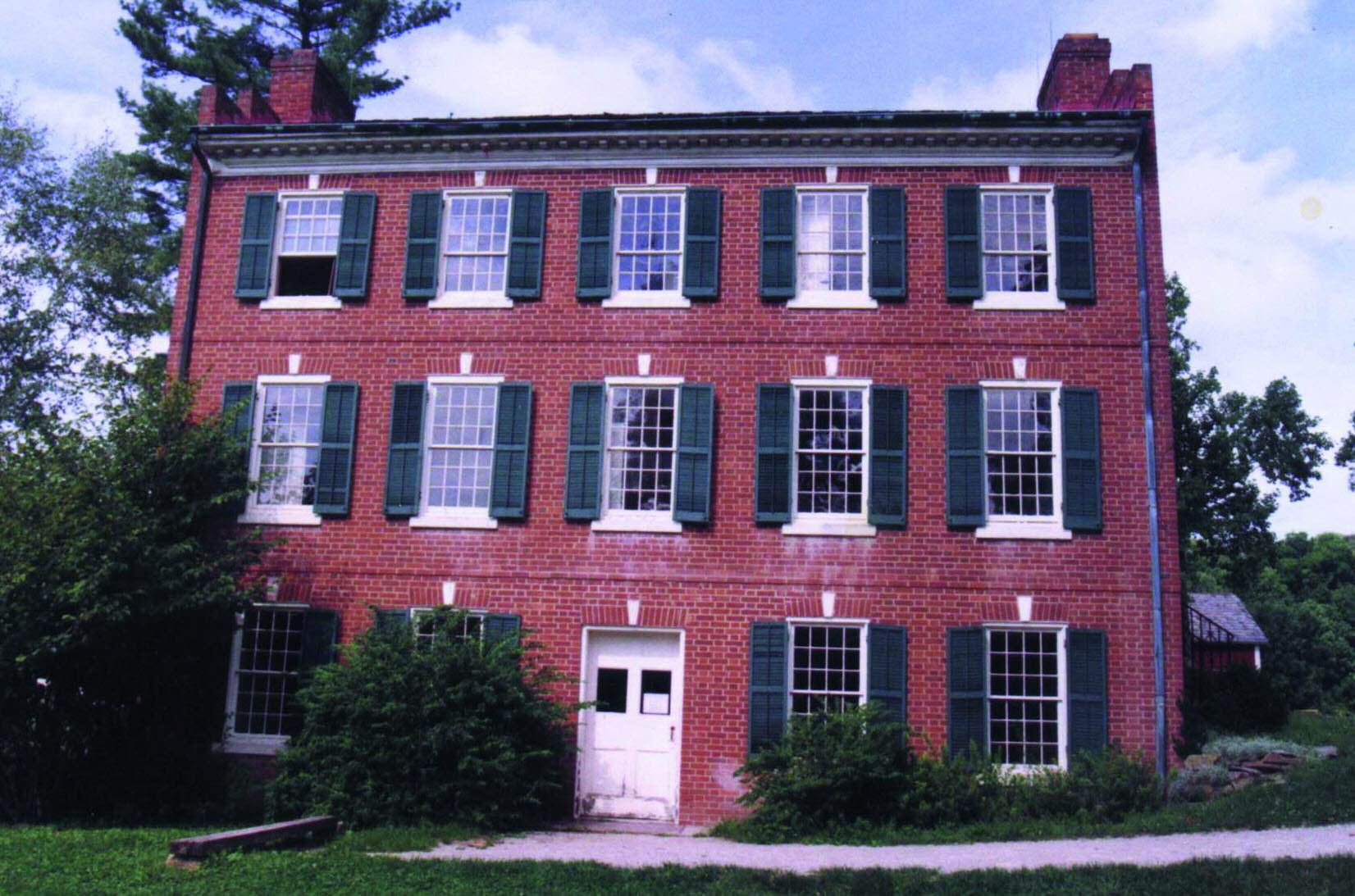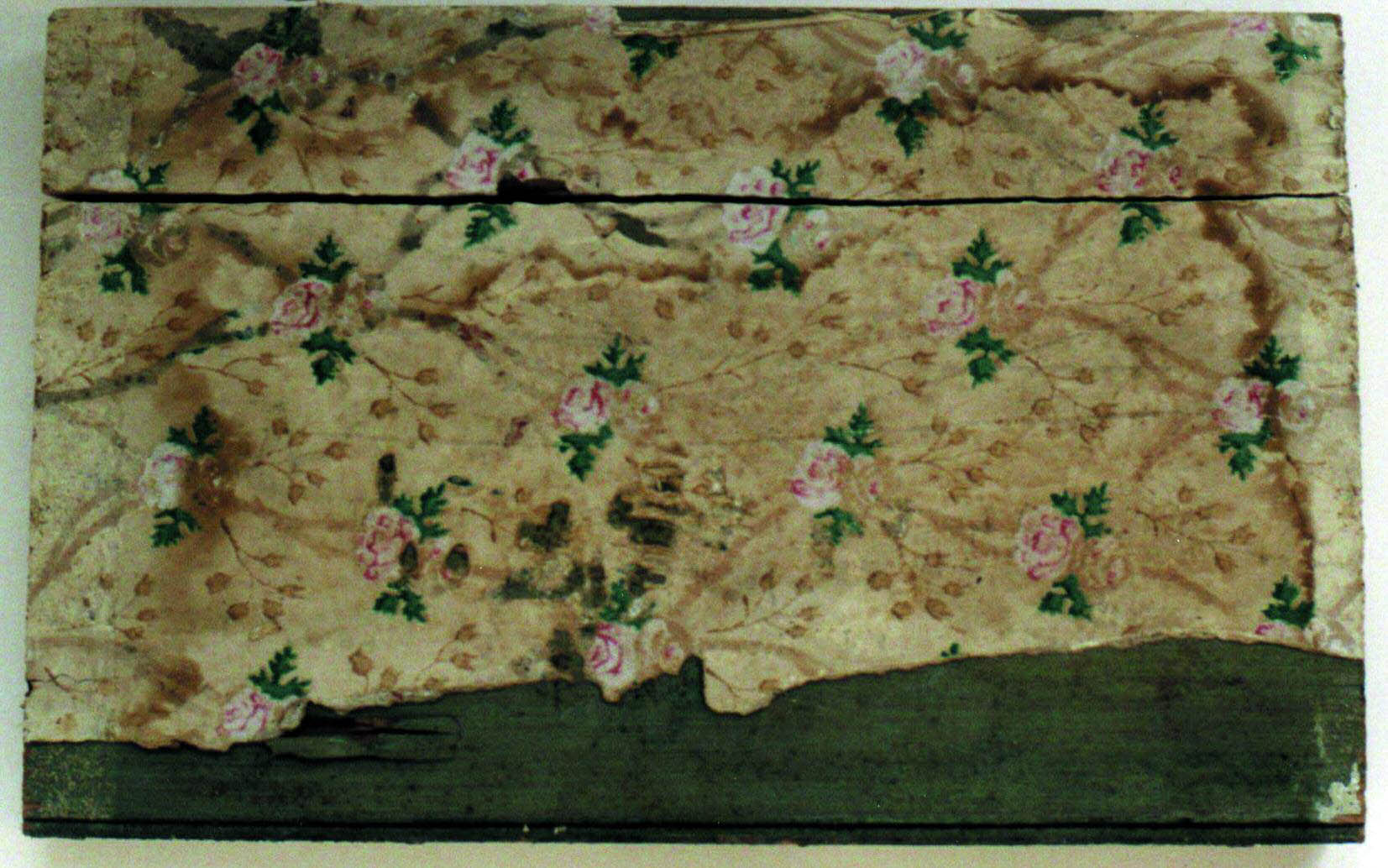INVESTIGATION, ANALYSIS, AND AUTHENTICATION OF HISTORIC WALLPAPER FRAGMENTSFRANK S. WELSH
7 SUMMARY AND CONCLUSIONSBy covering the points suggested in the five-step investigation and evaluation process, experienced conservators and preservationists can confidently recommend and undertake plans for interpretation of different periods at historic sites. Because a thorough on-site investigation often reveals wallpaper fragments, microscopical analysis for fiber and pigment composition can contribute important information to the multidisciplinary effort associated with restoration projects. When wallpapers and fabric wall coverings meet all the criteria of appropriate context, style, manufacturing processes, and composition for the period under study, they become authenticated candidates for reproduction. One such example is a large piece of old wallpaper from the Jonathan Hale House in Bath, Ohio, built in 1826 (fig. 26). A small section of a board from an original partition was discovered in a rebuilt fire-place hearth. The board has several layers of paint on one side and wallpaper on top of the paint (fig. 27). The floral style of the pattern was very popular in the mid-1800s, especially for bedrooms (Winkler 2000). Cotton and flax constitute the paper's fiber content; they were the primary paper fibers until about 1860, when wood pulp fibers were introduced. The paper is machine-made, a process developed in the 1830s, and the four thin-bodied, distemper colors of the pattern—white and pink roses with green leaves and brown stems—were roller-printed onto a light beige ground paint. The green paint used to print the leaves
The accumulated findings demonstrate the value of the five principal categories of comprehensive investigation and analysis of wallpapers and wall coverings. Combined, these findings suggest a date for the paper between the mid-1840s and 1860. This date fits within the 1850–70 period of historic significance chosen by the museum for the interpretation of the house. The colors and chronology of paint layers under the wallpaper on the salvaged board were compared to other collected paint evidence from all rooms in the house to determine the original location of the board. The wallpaper was thus authenticated, and, with carefully matched colors, it can be reproduced and rehung in its original location. Reproduction of the wallpaper will ultimately be facilitated by the fact that the paper sample shows a full repeat of the pattern. Even if a complete historic wallpaper pattern cannot be determined because the evidence is incomplete or circumstantial, the indication of wall-paper use is valuable in and of itself, as it contributes to a more comprehensive understanding of how an interior space was decorated. Authenticated and accurately reproduced wallpapers have the potential to dramatically affect a visitor's experience of a historic space and also offer opportunities for study for both laymen and professionals. ACKNOWLEDGEMENTSI would like to thank those who contributed to the research and analysis necessary for this project. The Barra Foundation, for funding Frank S. Welsh's 1990–91 analysis of 22 papers in the Colonial Williamsburg Foundation collection, undertaken for research purposes prior to the reissue of the Colonial I would also like to express my special gratitude to Walter C. McCrone, chemical microscopist, McCrone Research Institute, Chicago, Illinois. Dr. McCrone's death in July 2002 was an enormous loss to me as well as to the many people who came to know him over his long and extraordinary career. Dr. McCrone's genius and foresight, coupled with his unyielding dedication and enthusiasm for the life he enjoyed and the work that he embraced with the polarized light microscope, created a world of inspiration that was admired by and contagious to many people. The 20 years that I knew and worked with Dr. McCrone were enriched beyond measure by the gifts of his teaching and mentoring. |

